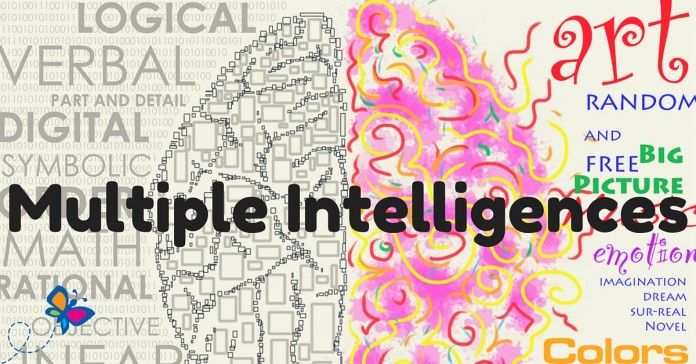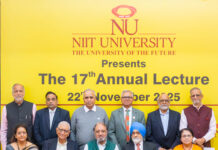The evolution of mankind holds testament to how far intelligence has come from its humble beginnings of scriptures to leveraging technology in gaining traction. Presently, new extensions of intelligence have gained recognition, drastically enhancing the evaluation and implementation of human competencies. Undoubtedly, in the coming decades, education and learning will become more constructive and immersive than it is today. Modern thought leaders have come up with various new theories, amongst which Multiple Intelligences is said to be in promising phases of altering academia.

Important Announcement – EasyShiksha has now started Online Internship Program “Ab India Sikhega Ghar Se”

Developed by Howard Gardner, Multiple Intelligences considers intellectual ability on a further broader scale; it brings to light eight human intelligences, instead of the standard two intelligences – verbal-linguistic and logical-mathematical intelligences, which have largely dominated traditional pedagogies. They are:
- Visual-Spatial Intelligence: Capacity to think in images, to visualize accurately and abstractly
- Musical Intelligence: Ability to produce and appreciate rhythm, timber and pitch
- Naturalist Intelligence: Ability to recognize and categorize animals, plants, and other objects in nature
- Bodily-Kinesthetic Intelligence: Ability to control one’s body movements and to handle objects skillfully
- Mathematical-Logical Intelligence: Ability to think conceptually and abstractly, and capacity to discern logical or numerical patterns
- Interpersonal Intelligence: Capacity to detect and respond appropriately to the moods, motivations and desires of others
- Intrapersonal Intelligence: Capacity to be self-aware and in tune with inner feelings, beliefs, values, and thinking processes
- Verbal-Linguistic Intelligence: Well-developed verbal skills and sensitivity to the sounds, meanings and rhythms of words.
Top Courses in Software Engineering
This particular program comes with great benefits as teachers of various curriculums wax eloquent praises on the method. The reasons for the academic and behavioural progress of the program appear to be twofold- First, every student is being provided an opportunity to specialize and excel in at least one area. Secondly, students learn the subject matter in a variety of methods, significantly extending chances of successfully understanding, in turn retaining that information. In fact, majority of the student needs are met through this program- their intellectual needs are whetted by constantly being challenged, leading to constant acclimatization of their creativity. At the same time, their emotional needs are quenched through working closely with peers, developing diverse strengths, and understand themselves better as individuals. Here are a few salient ways where students fulfill their intellectual needs through multiple intelligence-
- Development of increased sense of responsibility, self-direction and independence. The self-direction and motivation of these students help them tackle various tactical situations on a level-headed manner. The students become accomplished at incubating their own projects, gathering the necessary resources and materials, and making well-planned presentations of all kinds.
- 2. Discipline problems are significantly reduced. Students who were previously identified as having serious behavioural problems show rapid improvement during the beginning and by mid-course, they are making important contributions to their groups. Post this, students are found to have assumed positive leadership roles which, earlier have not been evident.
- All students develop and apply new skills. Students get to inculcate newer skills, to enhance their repertoire and further their chances inculcating valuable life lessons. Children learn to design multimodal presentations of independent projects including songs, skits, visuals, poems, games, surveys, puzzles, and group participation activities, empowering themselves with valuable outlets to express themselves clearly.
- Cooperative learning skills improves significantly. Since much of the centre work is culled in a collaborative manner, students become highly skilled at listening, helping each other grow, sharing the weight of leadership in different activities, easily adapting to group requirements and introducing new classmates to the program. They learn not only to respect each other, but also to appreciate and call upon their unique gifts, for mutual benefits.
- Academic achievement improves. With inculcation of multiple means to teach lessons, student learns a plethora of varied solutions to any singular problem. This leads to an increase in retention, with academic results being on an unprecedented high. Methods used for recalling information are predominantly musical, visual and kinaesthetic, indicating the influence of working through the different intelligences. Students, who have previously been unsuccessful in school, find new mediums to learn and hence significantly improve their grades.
Conclusion
When the focus of education shifts to learning rather than teaching, students enjoy their lessons and view the world with unique pair of eyes. Such innovative methods are set to usher in a new phase of education, where the kernel of learning would lie on awakening one’s inner abilities.
Empower your team. Lead the industry
Get a subscription to a library of online courses and digital learning tools for your organization with EasyShiksha
Request NowQ. Are EasyShiksha's internships truly free?
Yes, all internships offered by EasyShiksha are completely free of charge.
Q. How can I apply for an internship with EasyShiksha?
You can apply by visiting our website, browsing available internships, and following the application instructions provided.
Q. What types of internships are available through EasyShiksha?
EasyShiksha offers a wide range of internships across technology, business, marketing, healthcare, and more. Opportunities are continuously updated.
Q. Will I receive a certificate upon completing an internship?
Yes, upon successful completion, you will receive a certificate recognizing your participation and achievements.
Q. Are EasyShiksha's internship certificates recognized by universities and employers?
Yes, the certificates are recognized by universities, colleges, and employers worldwide.
Q. Is the download of certificates free or paid?
Access to internships and courses is free, but there is a small fee to download certificates, covering administrative costs.
Q. When can I start the course?
You can choose any course and start immediately without delay.
Q. What are the course and session timings?
These are fully online courses. You can learn at any time and pace. We recommend following a routine, but it depends on your schedule.
Q. What will happen when my course is over?
After completion, you will have lifetime access to the course for future reference.
Q. Can I download the notes and study material?
Yes, you can access and download course materials and have lifetime access for future reference.
Q. What software/tools would be needed for the course?
All necessary software/tools will be shared during the training as needed.
Q. I’m unable to make a payment. What should I do?
Try using a different card or account. If the problem persists, email us at info@easyshiksha.com.
Q. Do I get the certificate in hard copy?
No, only a soft copy is provided, which can be downloaded and printed if required.
Q. The payment got deducted but shows “failed”. What to do?
Technical errors may cause this. The deducted amount will be returned to your account in 7-10 working days.
Q. Payment was successful but dashboard shows ‘Buy Now’?
Sometimes payment reflection is delayed. If it takes longer than 30 minutes, email info@easyshiksha.com with the payment screenshot.
Q. What is the refund policy?
If you face technical issues, you can request a refund. No refunds are issued once the certificate has been generated.
Q. Can I enroll in a single course?
Yes, select the course of interest, fill in the details, make payment, and start learning. You will also earn a certificate.
Q. My questions are not listed above. I need further help.
Contact us at info@easyshiksha.com for further assistance.
The article is contributed by Manbir Singh Bedi – Founder, Primary Plus.
ALSO READ: let-the-genius-in-you-attain-an-award-life-time-get-free-education
Get Course: Introduction-Geography-Lession




































































